Related Research Articles
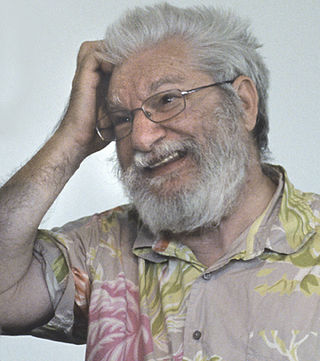
Daniel Graham was an American visual artist, writer, and curator in the writer-artist tradition. In addition to his visual works, he published a large array of critical and speculative writing that spanned the spectrum from heady art theory essays, reviews of rock music, Dwight D. Eisenhower's paintings, and Dean Martin's television show. His early magazine-based art predates, but is often associated with, conceptual art. His later work focused on cultural phenomena by incorporating photography, video, performance art, glass and mirror installation art structures, and closed-circuit television. He lived and worked in New York City.
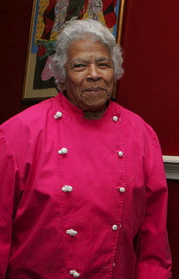
Leyah (Leah) Chase was an American chef based in New Orleans, Louisiana. An author and television personality, she was known as the Queen of Creole Cuisine, advocating both African-American art and Creole cooking. Her restaurant, Dooky Chase, was known as a gathering place during the 1960s among many who participated in the Civil Rights Movement, and was known as a gallery due to its extensive African-American art collection. In 2018 it was named one of the 40 most important restaurants of the past 40 years by Food & Wine.

George Rodrigue was an American artist who in the late 1960s began painting Louisiana landscapes, followed soon after by outdoor family gatherings and southwest Louisiana 19th-century and early 20th-century genre scenes. His paintings often include moss-clad oak trees, which are common to an area of French Louisiana known as Acadiana. In the mid-1990s Rodrigue's Blue Dog paintings, based on a Cajun legend called Loup-garou, catapulted him to worldwide fame.
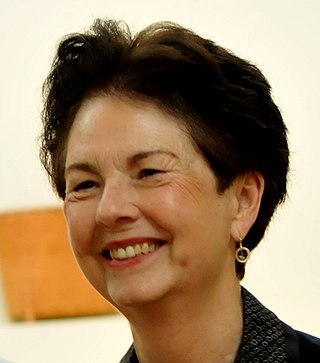
Mignon Faget is a jewelry designer based in her native New Orleans, Louisiana. Faget has long been acknowledged as one of New Orleans' premier designers of fine jewelry.

The Old Louisiana State Capitol, also known as the State House, is a historic government building, and now a museum, at 100 North Boulevard in Baton Rouge, Louisiana, U.S. It housed the Louisiana State Legislature from the mid-19th century until the current capitol tower building was constructed from 1929-32.

Evangeline is a musical with a book by Jamie Wax, lyrics by Wax and Paul Taranto, and music by Paul Taranto.

Dominique Gonzalez-Foerster is a French visual artist and educator. She is known for her work in video projection, photography, and art installations. She has worked in landscaping, design, and writing. "I always look for experimental processes. I like the fact that at the beginning I don't know how to do things and then, slowly, I start learning. Often exhibitions don't give me this learning possibility anymore."
Amalia Mesa-Bains, is a Chicana curator, author, visual artist, and educator. She is best known for her large-scale installations that reference home altars and ofrendas. Her work engages in a conceptual exploration of Mexican American women's spiritual practices that addresses colonial and imperial histories of display, the recovery of cultural memory, and their roles in identity formation.
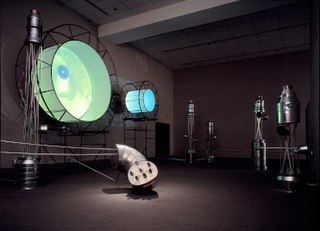
Margaret Cogswell is a mixed-media installation artist and sculptor based in New York. She emerged in late 1980s as a sculptor, gaining attention for abstract constructions exploring tensions between natural and human-made materials, roughness and sophistication. Since 2003, Cogswell's work has focused on a series of site-specific installations called "River Fugues": individually unique, multimedia projects involving detailed geographical, historical and social research that explore the intertwining of rivers, industry, people's lives, and the increasingly politicized role of water. The series' title invokes the contrapuntal musical form of the fugue to indicate the weaving of disparate voices, layers and media into a harmonious, composite whole. Critic Lilly Wei described the "River Fugues" as a hybrid form based on musical composition that "expresses the complex beauty of rivers … and sounds an alarm over the sweeping environmental changes that have endangered our natural resources."
Malaika Favorite is an American visual artist and writer whose art work can be found in major collections in the U.S. She works mainly in oil, acrylic, and watercolor and has carried out experiments with folded canvas and the written word as another dimension of a painting's text. Her provocative paintings and sculpture pieces emanate as much from her personal history as it does from the wider world.

Julianne Swartz is a New York-based artist. She is known for immersive installations, architectural interventions and sculptures that bring sound, optics and kinetics into play to create alternative, multisensory experiences. She uses utilitarian materials to warp, reshape or deepen perception, generating unexpected, ephemeral and participatory experiences out of common situations. Critics suggest that her work inhabits liminal areas, both literally and conceptually, bridging the perceptible and evanescent, public and private, visual and embodied, affective and technical. Art in America critic Peter R. Kalb wrote, "Swartz appeals to the senses and emotions with a quiet lyricism, using unassuming materials and marshaling grand forces like wind and magnetism" to offer "a thoughtful excursion into sound, sight and psyche."
Monica Bonvicini is a German-Italian artist who works with installation, sculpture, video, photography and drawing mediums. Bonvicini describes her practice as an exploration of relationshsips between architecture and space, power, gender and sexuality.
A. J. Meek is an American photographer, teacher, and writer. Meek is known for his selenium toned silver gelatin contact prints made with an 8 x 20 banquet camera of landscapes in Louisiana and the American West and for images that are a balance between the documentary tradition and the fine arts.
John K. Lawson aka JKL is an American Contemporary visual artist and poet, also known as the "Hieronymus Bosch of Beads," and is known for using salvaged Mardi Gras beads and items reclaimed from the destruction left by Hurricane Katrina in his art.
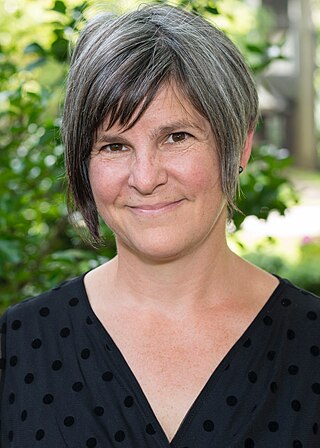
Beth Lipman is a contemporary artist working in glass. She is best known for her glass still-life compositions which reference the work of 16th- and 17th-century European painters.
Jennifer Wen Ma is a visual artist working and living in New York and Beijing. Ma's interdisciplinary practice bridges varied media such as installation, drawing, video, public art, design, performance, and theatre; often bringing together unlikely elements to create sensitive, poetic, and poignant works.

Katrina Andry is an American visual artist and printmaker. She is based in New Orleans, Louisiana.
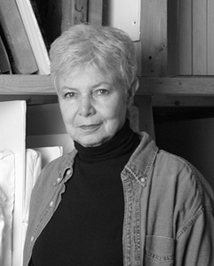
Merle Temkin is a New York City-based painter, sculptor and installation artist, known for vibrant, abstracted paintings based on her own enlarged fingerprint, and earlier site-specific, mirrored installations of the 1980s. Her work has often involved knitting-like processes of assemblage and re-assemblage, visual fragmentation and dislocation, and explorations of identity, the hand and body, and gender. In addition, critics have remarked on the play in her work between systematic experimentation and intuitive exploration. Her painted and sewn "Fingerprints" body of work has been noted for its "handmade" quality and "sheer formal beauty" in the Chicago Sun-Times and described elsewhere as an "intensely focused," obsessive joining of thread and paint with "the directness and desperation of marks on cave walls." Critic Dominique Nahas wrote "Temkin's labor-intensive cartography sutures the map of autobiography onto that of the universal in sharply revelatory ways." Her public sculptures have been recognized for their unexpected perceptual effects and encouragement of viewer participation. Temkin's work has been featured in publications including the New York Times, Artforum, ARTnews, New York Magazine, and the Washington Post. Her work belongs to the permanent collections of the Racine Art Museum, Museum of Arts and Design in New York, and Israel Museum, among others.
Sally Heller is an American artist. She uses everyday materials to make large installations that are often site-specific.
References
- ↑ "Extreme Precision: A Conversation with Margaret Evangeline", D. Dominick Lombardi, Sculpture Magazine, January/February 2010
- ↑ "Heriard Cimino". Archived from the original on 4 March 2016. Retrieved 18 April 2013.
- ↑ Dominique Nahas, "New Work of Margaret Evangeline: Achieving Punctuation" [ permanent dead link ]
- ↑ BBC News
- ↑ Malcolm Jones, "Toward a New New Orleans," Newsweek, April 26, 2008
- ↑ Linda Yablonsky, The New York Times, T Magazine, "Cottage Industry" September 26, 2008
- ↑ Absolute Arts
- ↑ Koan Jeff Baysa, "Ricochets and Tangled Trajectories," Art Slant, December 2009
- 1 2 Charta Art Books
- ↑ Margaret Evangeline: Shooting Through the Looking Glass
- ↑ Sabachtani on Amazon